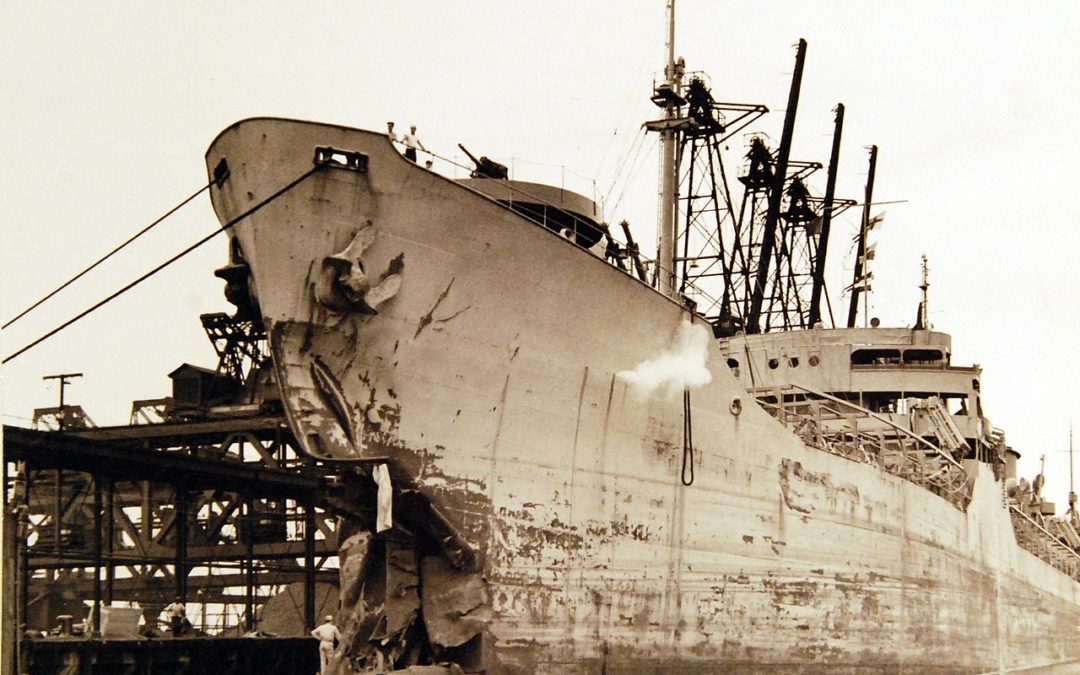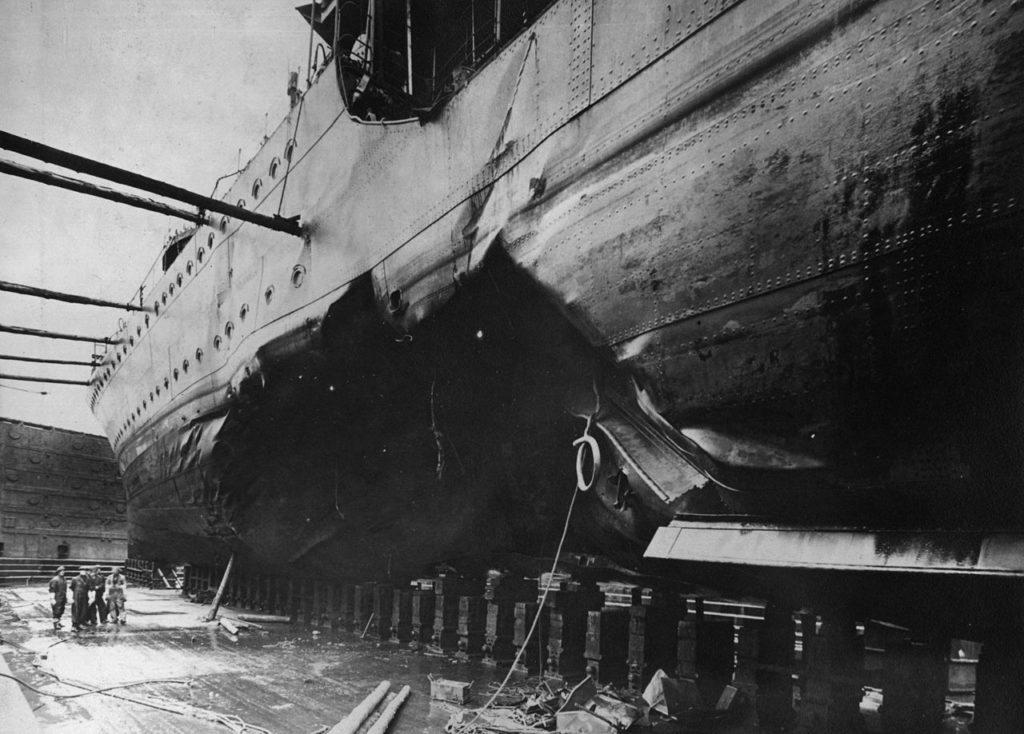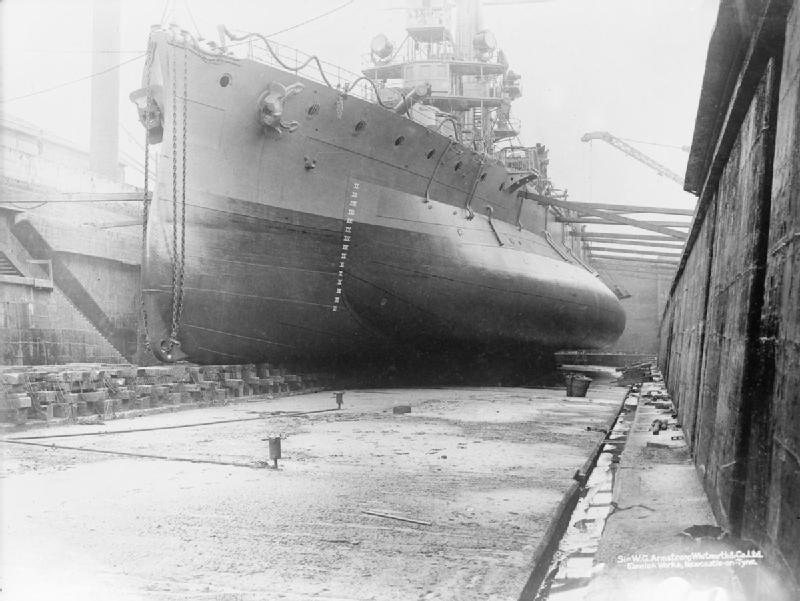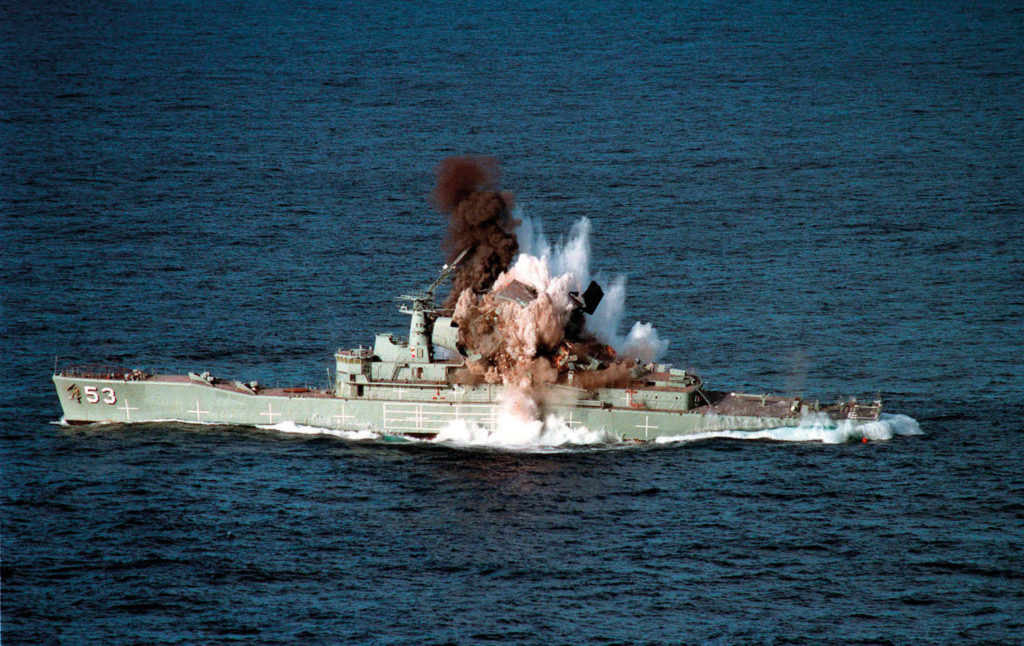Nothing shook warship designers so much as the arrival of the torpedo. Striking the ship below the water line, torpedoes could deliver an incredible amount of explosive power to a part of the warship that is not easily protected. Designers would learn that there was no easy way to counter its devastating effects. In this article, we will look at exactly how do torpedoes damage a ship.
What is a torpedo?
Simply put, a torpedo is a self propelled underwater missile that carries an explosive warhead to a target. Early torpedoes damaged their target by exploding as soon as it made contact. These torpedoes were called contact torpedoes. Newer torpedoes can detonate once in close proximity to a target. These proximity torpedoes do not even have to touch the ship to inflict damage upon it.
We will look at contact and proximity torpedoes in greater detail below.
How do Contact Torpedoes work?
A contact torpedo is one that has to physically hit the target to detonate. It accomplishes this through a contact fuse housed in the torpedo’s nose.
The method in which a contact torpedo causes damage is actually a two step process.
1 – The initial explosion of the torpedo’s warhead causes a large gas bubble to form. Because this bubble expands so quickly, it forms a shockwave. Once this bubble/shock wave strikes the ship’s hull, it punches the hull plates in, rupturing the hull. The energy radiating out from the point of contact is enough to tear surrounding plates off of the hull. This forms a large hole in the ship’s hull.
Next, the shockwave travels through the ship itself. The pressure wave can rupture seams, crack bulkheads, dislodge hatches, and many other things that would further compromise watertight integrity. If powerful enough, it can even dislodge machinery and disable equipment. If the blast manages to penetrate a magazine, the results can be catastrophic.
In addition to the blast wave itself, shrapnel is created from the pieces of the ship torn away in the explosion. Traveling at extremely high speeds, these projectiles can perforate the insides of the ship, causing extensive damage and further compromising watertight integrity.
2 – Following the creation of the bubble, the displaced water around it rapidly begins pushing back. Once the bubble finally collapses, the water rushes back in to fill the void. Because contact torpedoes cause the bubble to form against the ship’s hull, the returning water collects right at the rupture formed by the initial explosion. With so much water rushing into this point, it forces a very strong jet of water to enter the rupture. This water jet can be powerful enough to punch through bulkheads or plating already weakened by the initial blast.
So what does this do to the ship?
Well, if the ship is small enough, it might be destroyed outright in the explosion. If the torpedo manages to penetrate the ship’s magazine or other vital, it could also destroy larger ships as well.
If a ship is not destroyed by the initial blast, a large hole in the hull is still extremely serious. If the flooding cannot be contained and enough water enters the hull, gravity will overcome the ship’s buoyancy and cause it to sink.
Even if the ship does not sink, it can be disabled depending on where the water manages to intrude. The ship’s power plant might be knocked out, propellent charges rendered useless, or the ship itself could be structurally compromised so that it might not be battle/sea worthy.
How do Proximity Torpedoes Work?
Contact torpedoes proved themselves to be extremely dangerous to ships. However they could be somewhat countered by comprehensive torpedo defense systems. Before and during the Second World War, designers had created a variety of systems to reduce the danger of torpedoes.
Naturally, torpedo designers began looking at methods to circumnavigate the ship’s torpedo protection. To counter these torpedo defense systems, an even more dangerous torpedo was created, the proximity fused torpedo. These torpedoes were developed to travel underneath the ship and detonate under the hull.
Not only did these torpedoes target areas that could not be adequately protected by defense systems, the very structure of the ship would work against it.
How do proximity torpedoes damage a ship?
Proximity fused torpedoes actually damage a ship in three waves.
First, the torpedo detonates under the target’s hull. The pressure of the detonation creates a giant bubble under the ship. As this bubble rises, it lifts the ship out of water placing huge stress on the hull.
Secondly, once the bubble finally dissipates, the ship then begins to settle back into the void left behind by the bubble. Still supported by the bow and the stern that remain outside the void, the center of the hull sags into the void. This causes the hull to experience intense pressure from gravity.
Lastly, water rushes in to fill the void. This surge of water flows into the void then upwards, creating an intense geyser. The ship, already experiencing sagging effect, is then lifted up for a second time.
Damaged by an upward explosion and then further damaged by a sagging effect, the hull is then finished off by a massive surge of water pushing up into the underside of the ship. This method of damaging a ship is severe enough to break the back or keel of a ship. This would almost guarantee the destruction of a warship. Even those that escape destruction are certainly to have been severely damaged or crippled.
Final Words
Regardless of it being contact or proximity, a torpedo can bring about a tremendous amount of destructive power upon a warship. Almost immediately following the introduction of the torpedo, designers were looking for ways to counter it. Now that we know how a torpedo damages a warship, we will at some of the methods developed to help protect the ship from a torpedo. Stay tuned for that article!
Further Links
Want to follow Navy General Board on Social Media? Check us out on the platforms below!
Help the Website grow by purchasing a Navy General Board Shirt!
- YouTube
- The Navy General Board Forum
- Want to help the site continue to expand? Support us on Patreon.
- Learn more about how NGB got started!
More Great Articles
Check out our collection of articles. Some of our latest articles include:
The USS Midway and her Greatest Carrier Landing
Life aboard a US Navy Battleship During the Korean War.
The Bayern Class vs. the Queen Elizabeth Class
The Malta Class: The Carriers that Never Were
The Last Naval Battle of World War II
Check out Awesome Guest Articles!






Trackbacks/Pingbacks